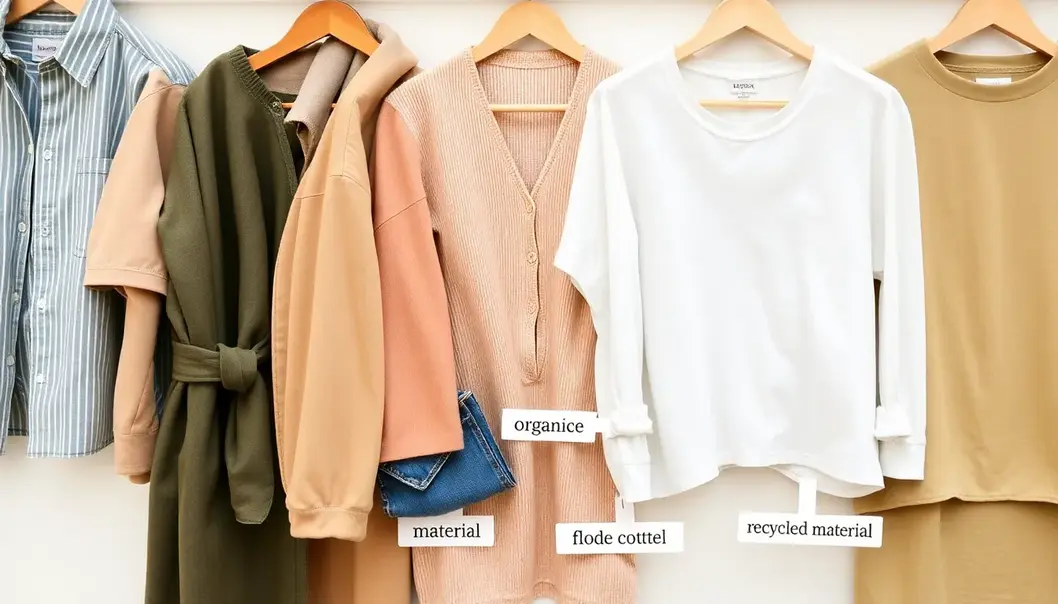Sustainable fashion is rapidly becoming a cornerstone for consumers who prioritize ethical and eco-friendly choices. It’s not just about trends; it’s a conscientious lifestyle commitment that aims to minimize environmental impact. From production practices to the life cycle of each garment, sustainable fashion offers an opportunity to make a positive difference in the world. As shoppers become increasingly aware of their carbon footprints, investing in sustainable fashion means embracing quality, transparency, and responsibility in the clothing industry. Join us as we delve deeper into the principles and practices that define sustainable fashion, and discover how you can seamlessly transition to a wardrobe that reflects your values.
Understanding the Impact of Fashion

The conventional fashion industry significantly impacts the environment and raises multiple ethical concerns. Unbeknownst to many, the clothes we wear contribute to pollution at every production phase. From water-intensive cotton farming to the emissions released during manufacturing, the trail of environmental harm is unending. Estimates suggest that textile production contributes to a substantial percentage of global carbon emissions, making it a non-negligible factor in the climate change debate.
Beyond the environmental ramifications, the fashion industry’s ethical challenges are equally pressing. Many conventional fashion supply chains rely on labor that is often underpaid and exploited, with hazardous working conditions persisting as a severe issue. Workers in some developing countries toil under circumstances that compromise their safety and well-being, highlighting a profound need for reform.
Sustainable fashion aims to address these pressing issues head-on. By focusing on eco-friendly materials and ethical labor practices, sustainable fashion offers a pathway to mitigate the industry’s impact. Innovations in materials, such as organic cotton, hemp, and recycled fibers, contribute to reducing the pollution attributed to fabric dyeing and treatment. These materials often require less water and energy to produce, effectively reducing the carbon footprint of fashion items.
Moreover, the role of sustainable practices extends into responsible manufacturing processes. Techniques like zero-waste production patterns and closed-loop recycling systems can minimize fabric waste, keeping large quantities of textiles out of landfills. Ethical certifications and transparent supply chains ensure that labor rights are upheld, providing workers with fair wages and safe workplaces.
Educating consumers on the impact of their purchasing decisions is crucial for driving industry change. By choosing garments made from sustainable materials and produced by ethical brands, consumers can directly influence the market towards more responsible practices. This shift not only aids in reducing environmental degradation but also promotes a more equitable fashion industry.
Sustainable fashion is no longer just a trend, but an essential movement that advocates for a profound transformation of how clothing is conceived and consumed. By understanding these impacts and embracing sustainable alternatives, consumers can play a pivotal role in crafting a greener and more ethical wardrobe.
Building a Sustainable Wardrobe

Curating a sustainable wardrobe is not just a trend; it’s a transformative approach that aligns personal style with ecological responsibility. By making thoughtful choices, consumers can decrease their environmental footprint significantly. Here’s how you can embark on this journey towards a greener closet.
The first step in building a sustainable wardrobe is selecting from eco-friendly brands. These brands often emphasize transparency in their production processes, prioritizing fair labor practices and environmentally conscious operations. Look for certifications that authenticate a brand’s commitment to sustainability, such as fair trade or organic labels, which are markers of genuine eco-friendly practices.
Choosing sustainable materials plays a crucial role in eco-friendly fashion. Natural fibers like organic cotton, hemp, and linen are preferable as they require fewer chemicals and water in production. Moreover, innovative materials such as Tencel and Econyl offer sustainable alternatives to traditionally pollutive textiles, utilizing renewable resources or recycled materials.
To ensure your clothes last as long as possible, focus on quality over quantity. High-quality garments tend to be more durable, reducing the need for frequent replacements. This mindset shift not only benefits the environment but also adds timeless pieces to your wardrobe that remain relevant over years.
Proper care and maintenance of clothing also extend their longevity. Washing clothes less frequently and at lower temperatures can prevent wear and tear. Air drying instead of tumble drying reduces energy consumption and fabric stress. Simple repairs like sewing on lost buttons or patching minor tears can also prolong the life of your garments, making your wardrobe sustainably oriented.
Second-hand shopping is another excellent strategy. Thrift stores, consignment shops, and online resale platforms offer a vast array of styles without the environmental cost of producing new clothing. This sustainable choice supports circular fashion, where garments are reused and repurposed instead of discarded prematurely.
Lastly, consider the power of rent and swap systems. Engaging in clothing rental services or swapping clothing with friends gives you access to varied styles for special occasions without permanent additions to your wardrobe. Such systems keep clothing in constant circulation, further reducing waste.
Building a sustainable wardrobe means making strategic, ethical choices about the clothes you acquire and how you care for them. Each decision not only reflects personal style but also contributes to a broader shift towards a more sustainable fashion industry.
Final words
Embracing sustainable fashion is more than just a trend; it’s a commitment to a better future for our planet. By understanding the impact of your clothing choices and making informed decisions, you can reduce your environmental footprint while supporting ethical practices. Each sustainable item bought is a step towards a greener world. Choose wisely, wear responsibly, and contribute to a more sustainable planet.
Ready to make a difference with your wardrobe? Explore our sustainable collection now.
Learn more: https://www.ecofriendlyfashionhub.com/shop
About us
Eco-Friendly Fashion Hub offers a curated selection of sustainable clothing brands. Our mission is to provide environmentally conscious consumers with stylish, ethical, and high-quality apparel options. From organic fabrics to recycled materials, each item is chosen with planet-friendly practices in mind.



